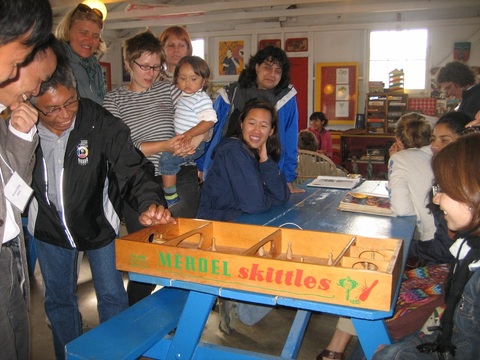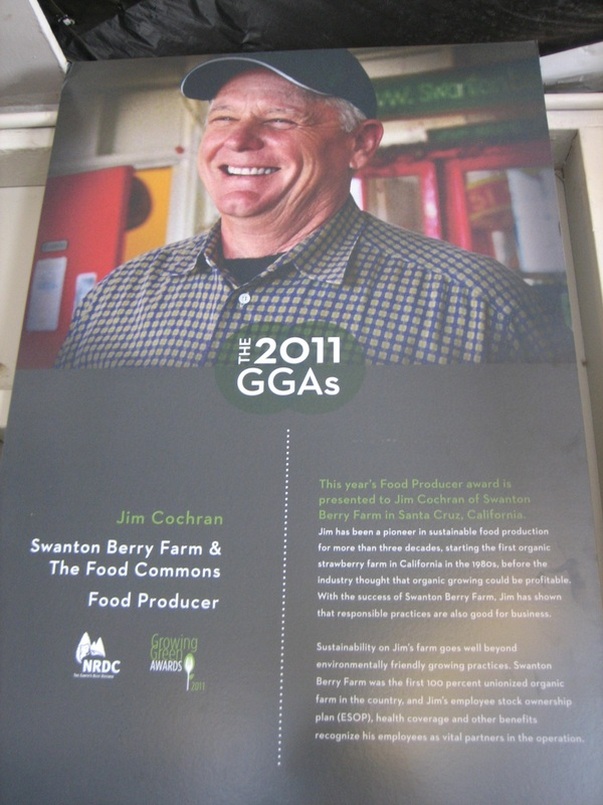
Photo: Here we are inside a 1940 barrack structure playing an old-fashioned game called Skittles. It provided a lot of fun and laughter as well as a great inter-cultural team building exercise for our ethnically diverse crew. Franciso from Mexico City (pictured here) was the high scorer with 125 points. He knocked down both 25 point pins and the 50 point pin. You would have thought we were in Las Vegas with the crowd that had gathered to watch the excitement as each player took their turn. Here's a peak at how the game works.
Swanton Berry was the 1st organic strawberry farm in California transitioning from conventional in 1983. There was a time when not even organic growers tried strawberries because it wasn't thought possible to grow organic strawberries for market - just too many pests and disease. Owner, Jim Cochran, proved them wrong. Much like Yvon Chouinard proved everyone wrong in the mid-90's when he switched all of Patagonia's cotton to organic. Now, organic strawberries represent 5% of the market in California going from 0 acres in 1982 to nearly 1700 acres in 2011 - Jim represents 1% of that (California produces 80% of the total strawberries in the US). Even now, conventional growers scratch their heads at how organic can be as successful as they are without using the ubiquitous methyl bromide to fumigate their crops. "How do they do it?" they ask. It's not simple but it isn't rocket science either....Jim worked with our course director, Steve Gliessman, back in 1983 on the 4-Step Conversion Process to transition his fields from conventional to organic. The basis is a 3-5 year crop rotation with crops like broccoli and cauliflower which can be harvested in those rotating years but their main job is to help reduce soil borne pathogens as well as cut down on the weed proliferation. Yes, broccoli is a magical weed killer. When the field is ready to be planted again, they use bio-mass as a from of natural fumigation simply by incorporating a complex mix of organic material into the soil, i.e. onion waste, grape pomace, rice bean, molasses and mustard oil. After the organic material, the soil is saturated with water and then covered with the black, plastic tarp which assimilates the anaerobic conditions of fumigation by suffocating, or cooking, the pathogens under the tarp and helping the organic matter to further decompose.Voila! You have organic strawberries!




 RSS Feed
RSS Feed
